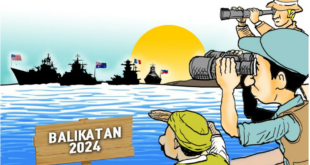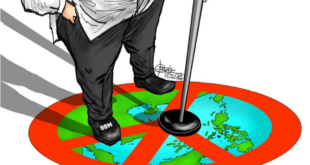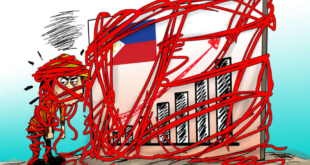
Although it was only an aspiration, as he explained later, the poor latched on to the promise of the new President and expected its fulfillment.
Instead of going the way he promised, rice prices shot up by almost double and President Marcos had to impose a price cap through Executive Order 39 which mandated a P41 cap on regular milled rice and P45 on well milled rice nationwide.
The imposed limits held and the cost of rice even fell below the set prices, prompting the lifting of the Palace directive.
But now grain prices are again on the upswing.
The high prices continue to be dictated by the law of supply and demand, which for the Philippines is a difficult situation since it is self-perpetuating.
The country is projected to remain the world’s top importer of rice, according to a US Department of Agriculture report. The report stated that local rice prices rose to a 14-year high during the recent holiday season and shortly after.
USDA’s Economic Research Service said the country is estimated to import 3.8-million metric tons of rice this year, followed by China, Indonesia, the European Union, Nigeria and Iraq.
The Philippines imported 56,090.63 metric tons, or MT, as of 11 January, coming in mainly from Vietnam which continues to be among the top suppliers of rice.
Thus, the domestic cost that relies on the global price trend is what opportunistic traders who control the market exploit.
In the final analysis, rice prices are being manipulated to cause instability as it symbolizes to many the unmet promise of the incumbent.
Despite the assurances of PBBM and his economic team that meeting the “aspiration” is a work in progress, the people’s impatience is growing.
Agriculture Secretary Francisco Tiu Laurel Jr. said the country needs to invest at least P1.2 trillion in the rice sector alone in the next three years, mainly to irrigate 1.2-million hectares of farmland.
“No major post-harvest facility was funded by the government in the last 40 years except for small and piecemeal projects that are irrelevant and useless. So that’s why we need really to fund these projects, but we cannot build small, we have to build bigger,” Laurel said.
The Agriculture chief is correct. Rice prices should not be dictated by external factors and the only way to do that is to be self-reliant by ramping up farm output which is not an easy task.
Rice is under a tariff regime which means that the private sector is allowed to import rice but has to pay tariffs.
Rice is also considered a bellwether for the prices of other commodities which means that high prices of the grain should mark a broader increase in prices of commodities.
Presidential Chief Legal Counsel Juan Ponce Enrile said that protecting the interest of retailers, farmers and consumers is a tough balancing act.
In the previous administration, the lofty goal of the Department of Agriculture to again make the country a net exporter of rice backfired, resulting in high prices and increased importation.
The “aspiration” for P20 per kilo is generating a bigger backlash from the public since promising to keep prices low is where the administration is most vulnerable.
Both promises have rice as the common denominator and both have low chances of being realized.
The lesson is never to shoot for the moon since the effort will mostly backfire and damage overall confidence.
*****
Credit belongs to: tribune.net.ph
 Atin Ito First Filipino Community Newspaper in Ontario
Atin Ito First Filipino Community Newspaper in Ontario






